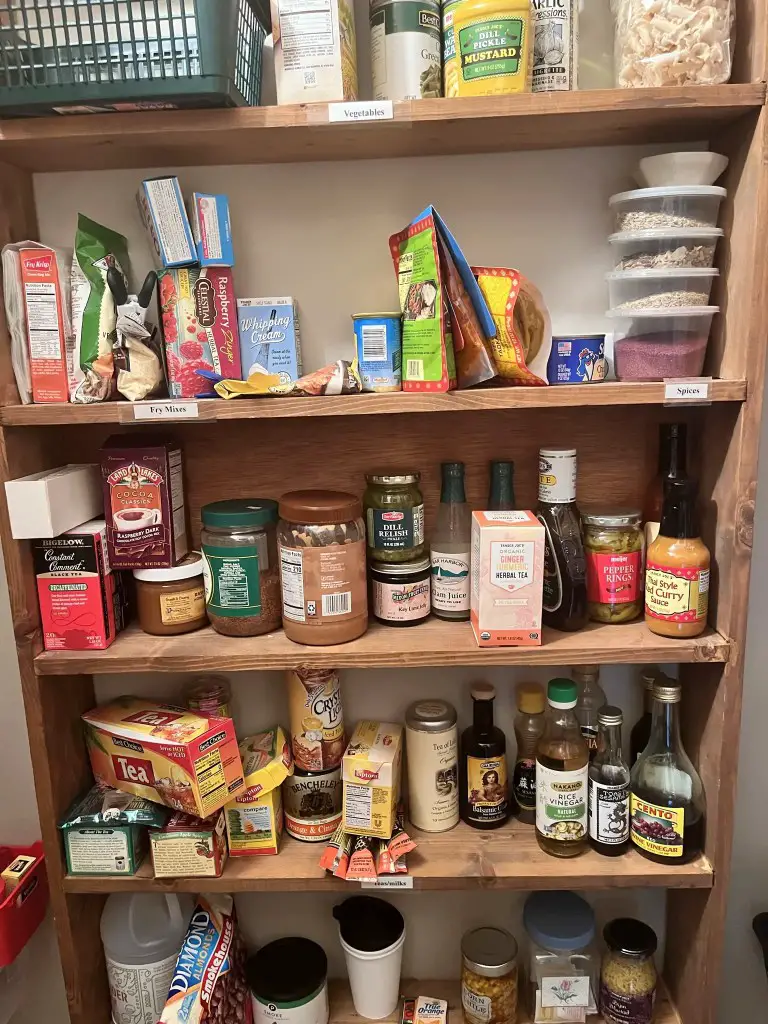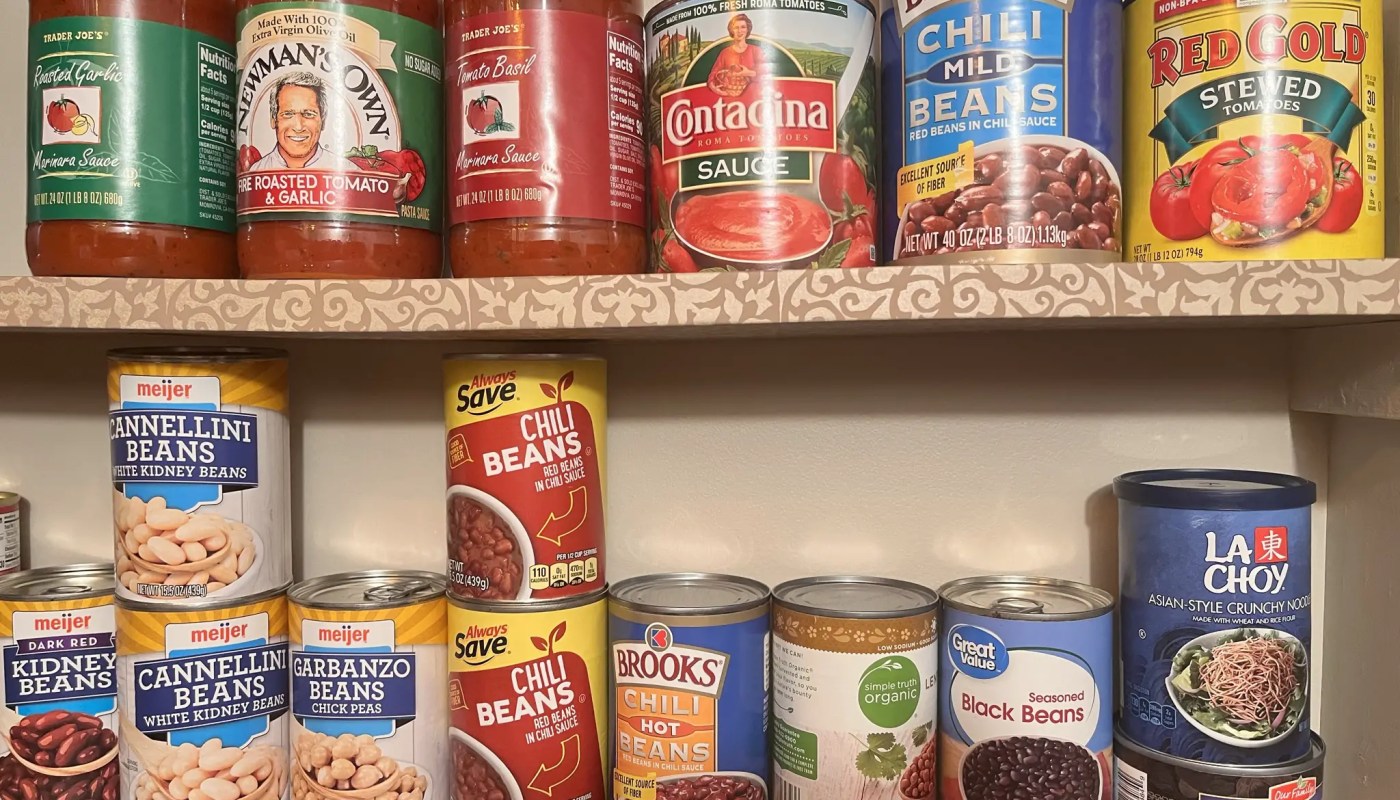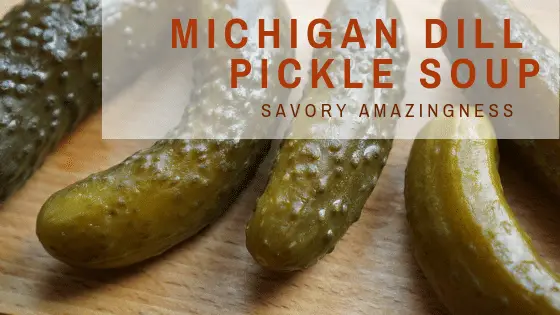Whether you’re an avid adventurer, a recreational camper, or a cozy cottage owner, you know that having a stocked pantry in your second home is vital. Knowing how to manage the shelf life of stored food can ensure you always have a healthy, safe meal at the ready. This blog post will guide you through understanding how long your stored food products will last and how to identify when it’s time to discard certain items. This information is especially relevant if your second home in northern Michigan experiences drastic temperature changes throughout the year.
The following recommendations are adapted from a guide designed by the Food Bank of Eastern Michigan, originally tailored for Alameda County Community Food Bank.
What We Will Cover
Storage Conditions

For optimal shelf life, different types of food products require specific storage conditions:
- Refrigerated Products: Should be kept at less than 40°F.
- Frozen Products: Should be kept at temperatures below -10°F.
- Dry Products: These should be held under dry conditions, and protected from extreme cold and heat.
Keep these optimal conditions in mind as you read further. You can find more information on ideal storage conditions at the USDA’s Food Safety Education page.
Shelf Life of Common Food Items
If you’ve ever spent time in a cottage, camper, or cabin, you know the importance of food storage. But do you know the shelf life of stored food in these environments? This guide will shed light on this important topic and help you ensure the safety and freshness of your food.
Baby Food or Formula (Jars)
- Estimated Shelf Life: Do not use beyond the code date.
- Discard if: Safety seal is popped, jar is cracked or leaking, or it’s past the code date.
Bread/Bakery Products
- Estimated Shelf Life: 3-10 days.
- Discard if: Any visible package defect or mold is present.
Canned Goods
- Estimated Shelf Life: 1-2 years.
- Discard if: Can is bulging or leaking, has severe seam dents, missing label, or severe rust.
Canned Goods: Acidic Vs. Non-Acidic Foods
Canned goods are a staple in most homes due to their long shelf life and convenience. The preservation process involved in canning makes it possible to store these foods safely for extended periods. However, the shelf life of canned goods can vary depending on whether the food is acidic or non-acidic.
Acidic Canned Foods
Acidic foods have a pH of 4.6 or lower. The natural or added acidity in these foods helps to inhibit the growth of most bacteria. However, acidic foods tend to react with the metal cans over time, leading to a shorter shelf life compared to non-acidic foods.
Examples of Acidic Canned Foods:
- Canned tomatoes or tomato products
- Fruits such as peaches, pineapples, and berries
- Pickled vegetables
- Applesauce
Estimated Shelf Life: Acidic canned foods can last between 12-18 months past their printed date if stored properly. Beyond this period, the food might still be safe to eat but may have a decline in taste and nutritional quality.
Non-Acidic Canned Foods
Non-acidic, or low-acid, foods have a pH higher than 4.6. These foods are less likely to react with the metal cans, resulting in a longer shelf life.
Examples of Non-Acidic Canned Foods:
- Vegetables such as peas, corn, and carrots
- Meats like chicken, beef, and fish
- Soups and broths
- Beans
Estimated Shelf Life: Non-acidic canned foods can last between 2-5 years past their printed date if stored properly. Similar to acidic foods, while the food may be safe to consume past this period, there may be a noticeable decrease in flavor and nutritional value.
Remember, regardless of whether the canned food is acidic or non-acidic, any signs of spoilage such as a bulging can, leakage, or off odors should signal that the can needs to be discarded.
Cereal and Crackers
- Estimated Shelf Life: 3 months.
- Discard if: Any visible package defects or stains on the box.
Dried Beans and Pasta
- Estimated Shelf Life: 1-2 years for dried beans, 1 year for pasta.
- Discard if: Any visible package defect or mold is present.
Freezer Products
- Estimated Shelf Life: 3 months to 1 year.
- Discard if: Any visible package defects, freezer burn, off odor, or evidence of thaw/refreezing.
For a comprehensive list of common food items, their estimated shelf life, and signs of spoilage, visit the FDA’s Food Product Dating page.
FAQs On Shelf Life of Stored Food
What signs should I look for to know if food is spoiled?
Look for visible defects, off odors, changes in color or texture, and in some cases, mold.
What is the ideal storage temperature for refrigerated and frozen items in my cabin?
The ideal temperature for refrigerated items is below 40°F, while frozen items should be stored at temperatures below -10°F.
How long can I safely store canned goods in my camper?
Canned goods generally have a shelf life of 1-2 years if stored properly.
Key Takeaways About Shelf Life For Stored Food

While shelf life can be a helpful guideline, always inspect your food before eating. If a product shows signs of damage, or spoilage, or if you suspect it may have been improperly stored, it’s better to err on the side of caution and discard it.
Remember, when it comes to food safety in your cottage, camper, or cabin, maintaining the right storage conditions and understanding the shelf life of your stored food can make all the difference. As a cabin, camper, or cottage owner in northern Michigan, protecting your stored food from extreme cold and heat is crucial to preserving its quality and safety.
Related Food Reading
Savory Vegetarian Michigan Chili – Tastes Great Year Around
Exploring the Culinary Universe: A Journey into Online Recipes
Kentucky Famous Food – 11 Ways to Savor the Bounty of The Bluegrass State
10 Pickle Companies In Michigan – Vlasic Pickle is Michigan’s, Favorite Pickle





